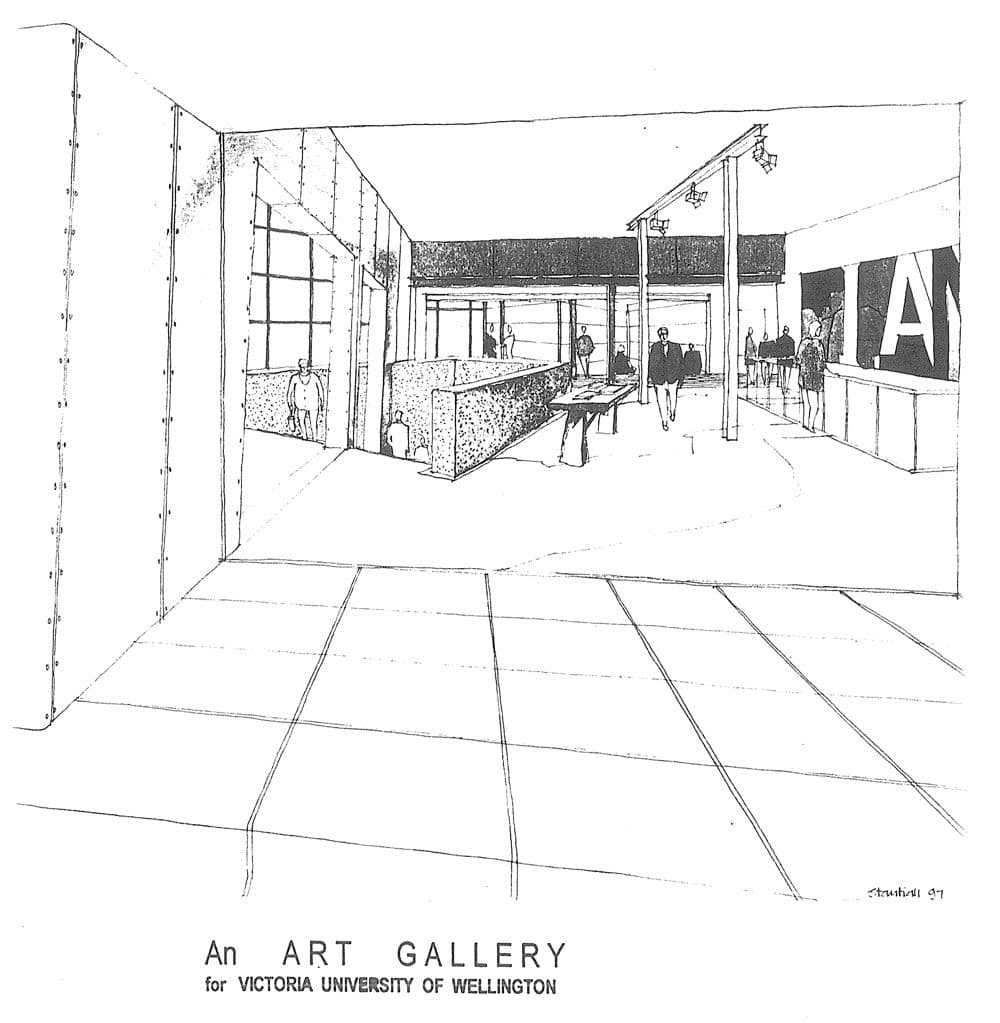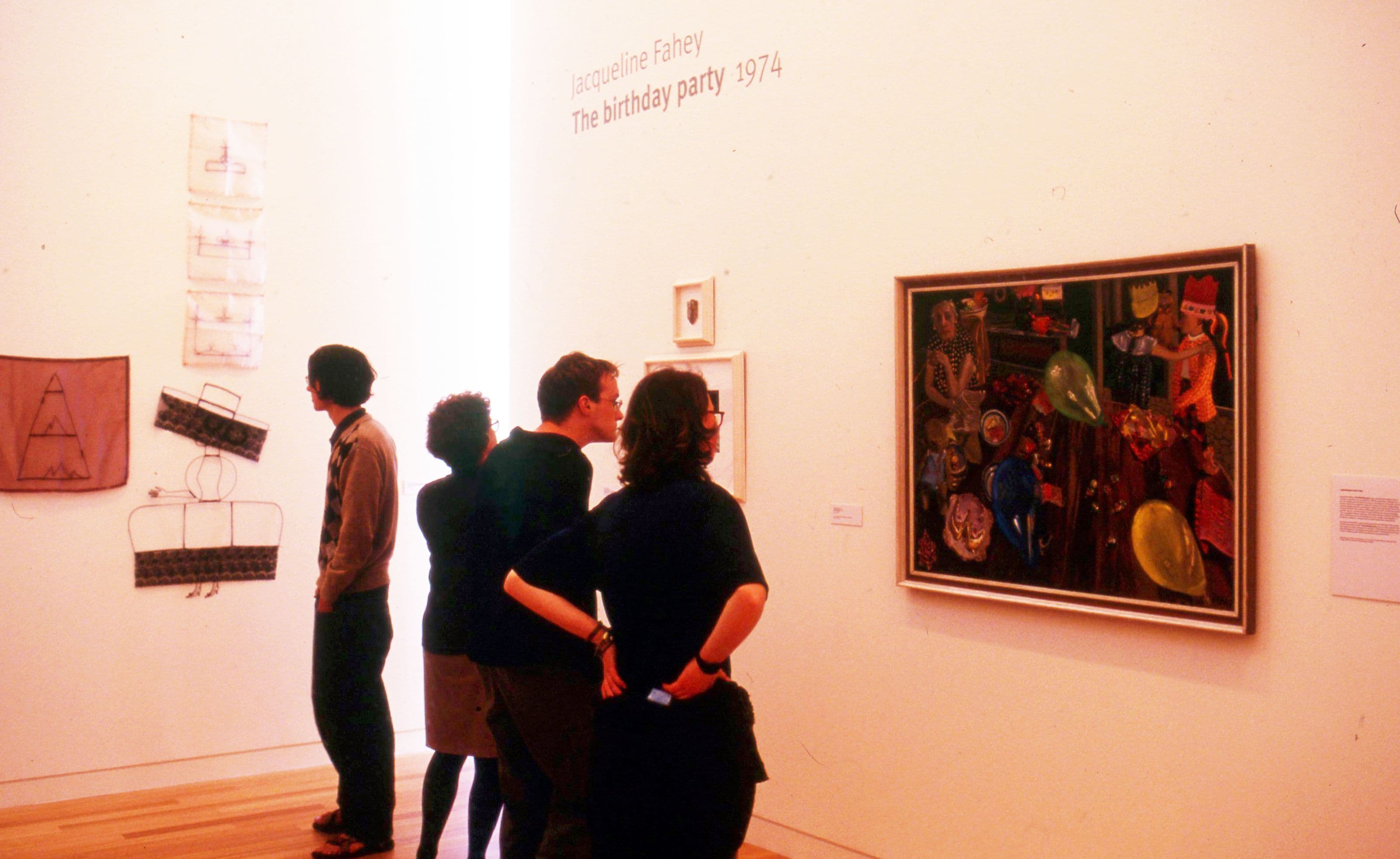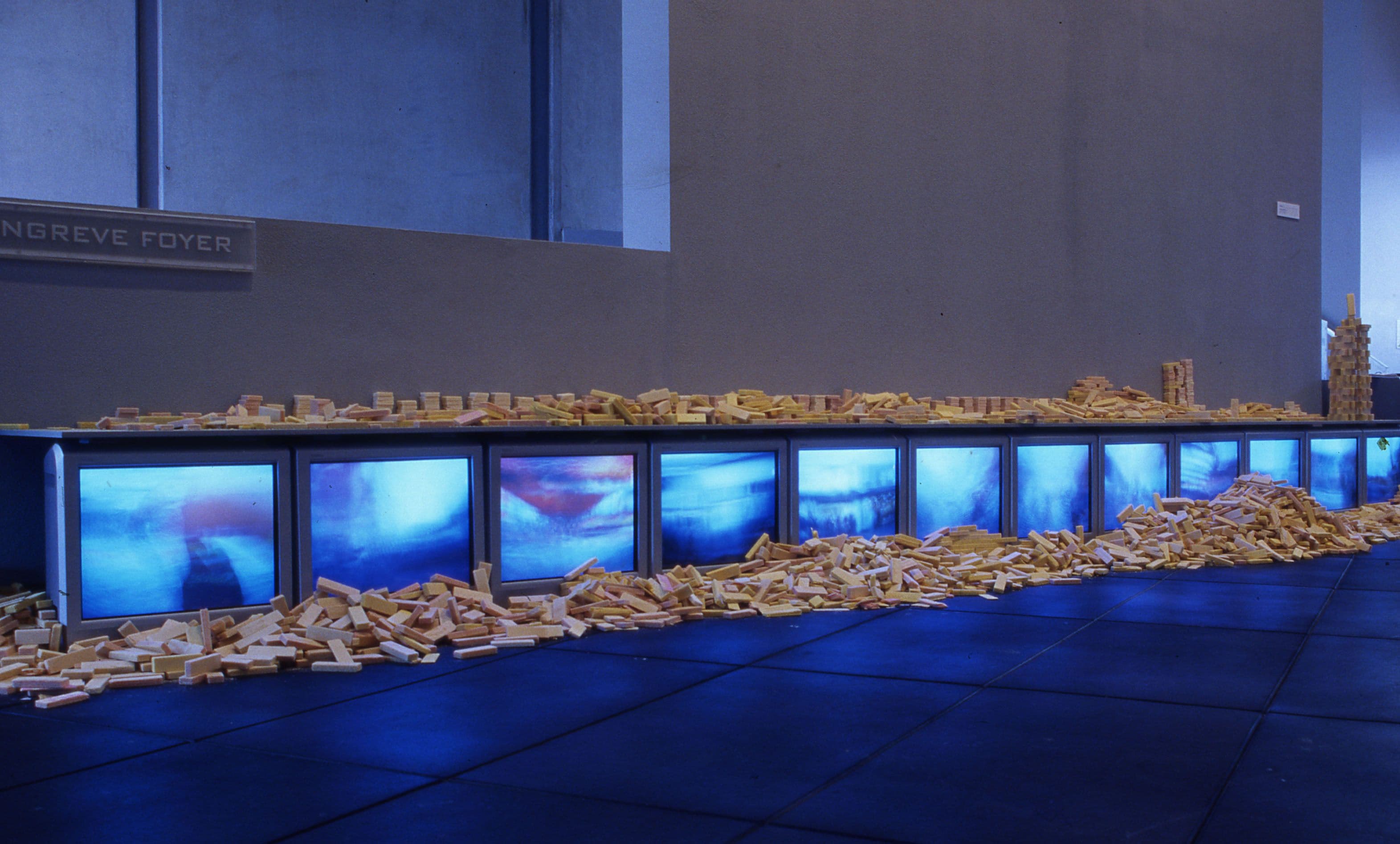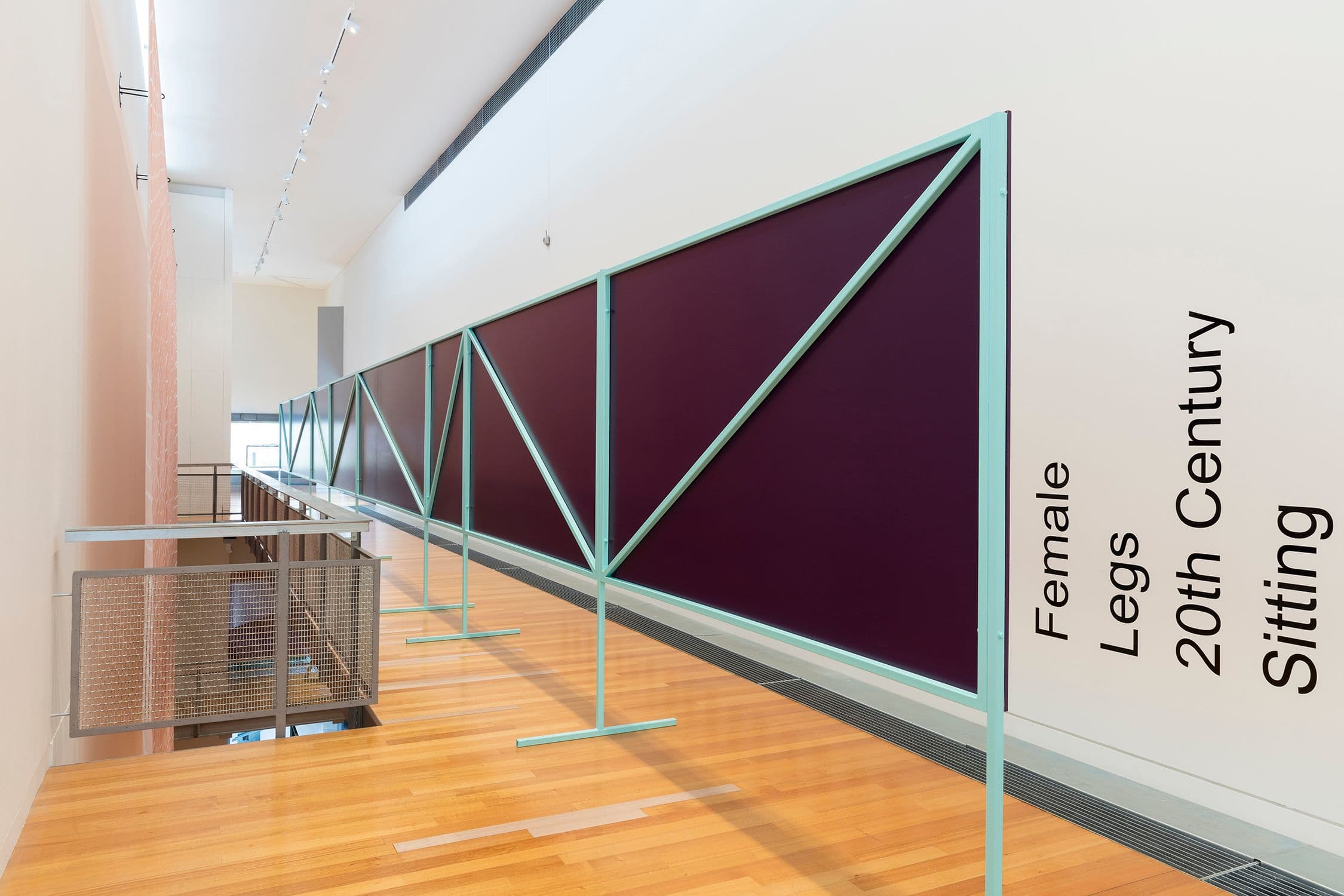An Art Gallery for Victoria University of Wellington
In October 1996, Associate Professor of Art History Jenny Harper and Lecturer in Art History Christina Barton submitted a 'Preliminary Proposal for an Art Gallery for Victoria University of Wellington'. In their proposal, Harper and Barton outlined the potential for a purpose-built campus gallery to serve as a resource for applied interdisciplinary learning and research, with a changing programme of historical exhibitions and contemporary artists' projects, events, seminars and discussions.
The gallery would serve as a 'museum-laboratory in which objects and images could be interpreted and understood within broad historical, social and cultural contexts... in ways which encouraged experimentation and innovation'. As well, the gallery would provide a professional structure for the management and development of the University's art collection, which, until then, had been largely cared for by committed teaching staff.
After the University agreed in principle to the gallery as its centennial project, in October 1997 essential seed funding was secured with a foundation grant of $1 million dollars generously donated by Denis and Verna Adam, through the Adam Foundation. Over the next two years, a Gallery Steering Group – comprised of Harper, David Mackay, Roy Sharp, Tim Beaglehole, Ngātata Love, Patsy Reddy and Tony Chamberlain – continued fundraising and planning towards the gallery's development, gaining the support of a number of additional patrons including the Chartwell Trust, Wellington Community Trust and a range of individual donors.

Athfield Architects, Concept sketch of Adam Art Gallery, 1997. Te Pātaka Toi Adam Art Gallery Archives.
Athfield Architects' proposal was selected from three short-listed architectural practices. The brief was to design the gallery for a site that re-utilised the seldom-used Culliford stairway between the Old Kirk, Hunter and Student Union buildings. The building they proposed would connect the upper and lower parts of the hillside Kelburn campus, providing 350 metres' of exhibition space, across three visually interconnected levels. From below, a distinctive black zinc-clad wedge housing the Chartwell Galleries was conceived to contrast dramatically with the historic red brick of the Gothic-revival university buildings.
Nearing the completion of construction, to cover a small shortfall in the gallery's fundraising effort, the Steering Group made the controversial decision to sell Colin McCahon's Storm Warning (1980-81), one of five paintings by the artist owned by the University. The sale easily raised funds to cover the $80,000 shortfall, with the remainder invested in a trust to secure ongoing resources for the University art collection's development. But the outcry amongst staff and students dismayed by the sale of a work explicitly gifted by the artist so it would not '[disappear] into a private collection' cast a shadow over the building's opening.

Installation view, Manufacturing Meaning, 1999, Te Pātaka Toi Adam Art Gallery.
Six months before the gallery was due to open, in April 1999, Zara Stanhope began work as the Adam Art Gallery's inaugural Director. She was an experienced gallery professional previously working at Monash University Gallery in Melbourne.
The Adam Art Gallery was opened in September 1999 by Governor General Sir Michael Hardie-Boys with the exhibition Manufacturing Meaning. Conceived by Christina Barton, this saw ten guest curators creating small exhibitions each contextualising a work chosen for them from the Collection. Notably, local Wellington film-maker and writer, Stuart McKenzie, brought McCahon's Storm Warning back for the occasion, to hang alongside Michael Smither's remarkable painting of Christ Driving the Money-changers from the Temple, 1972.
During her tenure as inaugural director, Stanhope developed an ambitious, internationally recognised exhibition programme, helping embed the Gallery firmly within Wellington's and Aotearoa New Zealand's cultural landscape. She oversaw the development of a professional structure for the Gallery's programming and operations, as well as developing policies around the management of the Collection, including accessioning, care and deaccessioning, in line with international best-practice.
Stanhope's curatorial projects include The Numbers Game (22 June–30 July 2000); Alive!: Still Life into the Twenty first Century (27 February-29 April 2001); Parallel Worlds (23 June–29 July 2001); Botanica (11 August–7 October 2001). Other significant projects during Stanhope's tenure include the immersive installation Guests and Foreigners, Rules and Meanings (Te Kore) by American Conceptual artist Joseph Kosuth (2 March-30 April 2000, initiated and curated by Christina Barton); New Zealand artist Gavin Hipkins' project The Habitat (13 May–11 June 2000); as well as projects by international artists such as Australia-based Singaporean artist Suzann Victor; Brazilian artist Fernanda Gomes and Chinese artist Zhang Huan.

Installation view, Concrete Horizons: Contemporary Art From China, 2004, Te Pātaka Toi Adam Art Gallery
In May 2002, Sophie McIntyre assumed the Directorship of the Gallery, arriving from Queensland, where she had been Gallery Manager at the Griffith University Queensland College of Art Gallery. Under McIntyre, the Gallery continued to build its reputation as a context for innovative, thoroughly researched and interdisciplinary artistic and curatorial projects, and educational programmes.
During McIntyre's tenure the Adam Art Gallery presented a series of exhibitions, often in collaboration with international institutions, which examined New Zealand's role within and in relation to an Asia-Pacific context, including PLAY: Portraiture and Performance in Recent Video Art from Australia (14 October–5 February 2006), Concrete Horizons: Contemporary Art from China (21 February–9 May 2004) and Islanded: Contemporary Art from New Zealand, Singapore and Taiwan (23 February–14 May 2006). The Gallery also presented projects by Brett Graham, Destiny Deacon, Lisa Reihana, Mark Adams, Lisa Taouma and Nalini Malani.
In April 2007, Victoria University of Wellington art historian Christina Barton was appointed as the third Director of the Adam Art Gallery. During Barton's tenure, the Gallery's standing and profile has continued to develop, with an emphasis on building its reputation for supporting research-led inquiry; ambitious, experimental approaches to contemporary art, and locating art within broader social, cultural and political frameworks.
As well as programming which interrogates national and international art histories, and pressing concerns in contemporary life, the Adam Art Gallery has staged significant full-gallery projects by contemporary New Zealand artists, including Simon Denny's The Personal Effects of Kim Dotcom (4 October–19 December 2014); Ruth Buchanan's Bad Visual Systems, with Marianne Wex and Judith Hopf (1 October–22 December 2016); Luke Willis Thompson (21 February 2018–15 April 2018) and Kate Newby, YES TOMORROW (20 February–30 May 2021).

Installation view, BAD VISUAL SYSTEMS: Ruth Buchanan, Judith Hopf, Marianne Wex, Te Pātaka Toi Adam Art Gallery, 2016. Photo by Shaun Waugh.
The Gallery has also undertaken important work to make visible practices that have been overlooked by the mainstream, including the first investigation of Marcel Duchamp's influence on New Zealand art, Peripheral Relations: Marcel Duchamp and New Zealand Art 1960–2011, curated by Marcus Moore (27 July–7 October 2011); the only retrospective devoted to the work of Vivian Lynn, I,HERE, NOW (25 October 2008–15 March 2009); what is a life? (27 May–21 September 2014), a survey of Kim Pieters' work, the first to bring together all facets of her multi-diciplinary practice, and Te Mata: The Ethnological Portrait (26 July–5 October 2008), the only formal presentation of the plaster portrait busts of Nelson Illingworth curated by the late Roger Blackley.
The Gallery team has expanded from three staff members (the director, and part-time administrator and collection officer), to five nearly full-time staff in 2020, including a Curator Collections, Public Programmes and Communications Coordinator, Head Technician, and Gallery Administrator.
In 2018, with a generous donation from patron Barbara Blake, the Adam Art Gallery launched its Internship, dedicated to supporting early-career arts professionals to develop knowledge of and skills in gallery work. Previous interns include Lachlan Taylor (2018), Nina Dyer (2019), and Millie Riddell (2020–21).
In 2020 the Adam Art Gallery assumed responsibility for the New Zealand Art Archive. Housed in the New Zealand Art Research and Study Centre, this is a resource built with the Art History Programme over 25 years, and consists of books, catalogues, journals, archives, images and ephemera. This is housed adjacent to the Gallery's office in the Old Kirk Building and is available to students, staff and researchers. This resource is a reminder of the Gallery's commitments to research as the basis for dialogue, critical thinking, exhibition making and public programming.
Situated within the educational context of the University, Te Pātaka Toi Adam Art Gallery aims to be a platform where audiences can come together across disciplines, cultures and contexts. It contributes to the development of artistic practice and discourse locally, nationally and internationally.